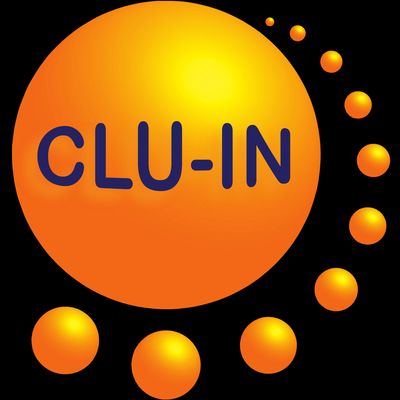Since 1998, The Contaminated Site Clean-Up Information (CLU-IN) website has presented Internet Seminars covering a wide variety of technical topics related to hazardous waste characterization, monitoring, and remediation. For select seminar topics offered since 2012, we are making complete video recordings available through our archives. This feed contains all video seminars archived in the last 12 months. For a complete list of seminars archived since 2000, please visit http://www.clu-in.org/live/archive/. Our Rehabilitation Act Notice for reasonable accommodation is available at http://www.clu-in.org/training/accommodation.cfm. CLU-IN was developed by the U.S. Environmental Protection Agency (EPA) but is intended as a forum for all waste remediation stakeholders. For more information and to view upcoming live offerings, please visit http://www.clu-in.org/live/. For a complete list of RSS feeds available on CLU-IN, please visit http://www.clu-in.org/rss/about/.
http://www.clu-in.org/live/archive
Gesamtlänge aller Episoden: 13 days 3 hours 21 minutes
Connecting the Science to Managing LNAPL Sites a 3 Part Series - Part 1 (May 8, 2018)
Connecting the Science to Managing LNAPL Sites ? 3-Part Series The newly updated LNAPLs (Light Non-Aqueous Phase Liquids) 3-part training course series is based on the ITRC guidance: LNAPL Site Management: LCSM Evolution, Decision Process, and Remedial Technologies (LNAPL-3, 2018) and focuses on connecting the science to managing LNAPL sites and helping you: Build upon your Understanding of LNAPL Behavior in the Subsurface (Part 1) Develop your LNAPL Conceptual Site Model and LNAPL Remedial...
Bioavailability of Contaminants in Soil: Considerations for Human Health Risk Assessment (May 3, 2018)
Risk-based cleanup goals are often calculated assuming that chemicals present in soil are absorbed by humans as efficiently as the chemicals dosed during the toxicity tests used to determine regulatory toxicity values (such as the Reference Dose or Cancer Slope Factor)...
Mining Webinar Series: Successful Implementation of Biologically-Based Passive Remediation Systems (May 1, 2018)
Metal mines at their end of active operations must prepare for the potential long-term treatment of mining-influenced water (MIW). This webinar will highlight how biologically-based passive remediation technologies have been shown to be a cost-effective option for treating MIW, especially mildly- to moderately-impacted waters at low- to moderate-flow rates such as may be found at remote or closed mine sites...
Long-term Contaminant Management Using Institutional Controls (Apr 10, 2018)
Institutional controls (ICs) are administrative or legal restrictions that provide protection from exposure to contaminants on a site. When ICs are jeopardized or fail, direct exposure to human health and the environment can occur...
Petroleum Vapor Intrusion: Fundamentals of Screening, Investigation, and Management (Apr 5, 2018)
Chemical contaminants in soil and groundwater can volatilize into soil gas and migrate through unsaturated soils of the vadose zone. Vapor intrusion (VI) occurs when these vapors migrate upward into overlying buildings through cracks and gaps in the building floors, foundations, and utility conduits, and contaminate indoor air. If present at sufficiently high concentrations, these vapors may present a threat to the health and safety of building occupants...
Environmental Sequence Stratigraphy and the new EPA Remediation Geology Paradigm (Apr 3, 2018)
U.S. EPA?s Technical Support Project in conjunction with the Superfund Task Force will host this webinar highlighting a recently released EPA Technical Issue Paper serving as a practical guide on the application of the geologic principles of sequence stratigraphy and facies models to the characterization of stratigraphic heterogeneity at hazardous waste sites. This technology is applicable to sites underlain by clastic aquifers (intermixed gravels/sands/silts/clays)...
FRTR Presents...Remediation Technologies for Radionuclides and Heavy Metals in Soil, Ground Water and Sediments, Session 2 (Mar 28, 2018)
This webinar is part of a series featuring presentations delivered at the November 2017 FRTR Meeting. This meeting focused on remediation technologies for radionuclides and heavy metals in soil, ground water and sediments. More information about the meeting can be found at https://frtr.gov/meetings1.htm...
FRTR Presents...Remediation Technologies for Radionuclides and Heavy Metals in Soil, Ground Water and Sediments, Session 2 (Mar 28, 2018)
This webinar is part of a series featuring presentations delivered at the November 2017 FRTR Meeting. This meeting focused on remediation technologies for radionuclides and heavy metals in soil, ground water and sediments. More information about the meeting can be found at https://frtr.gov/meetings1.htm...
Groundwater Statistics for Environmental Project Managers (Mar 27, 2018)
Statistical techniques may be used throughout the process of cleaning up contaminated groundwater. It is challenging for practitioners, who are not experts in statistics, to interpret, and use statistical techniques. ITRC developed the Technical and Regulatory Web-based Guidance on Groundwater Statistics and Monitoring Compliance (GSMC-1, 2013, http://www.itrcweb...
Comparison Studies on Radiation Risk and Dose Assessment Models for Radioactively Contaminated Soil, Inside Buildings and Outside Surfaces (Mar 26, 2018)
A participant for the Oak Ridge Institute for Science and Education Research Participation Program, Nasser Shubayr, while at EPA's Office of Superfund Remediation and Technology Innovation has worked on five research projects on risk and dose assessment models recommended by governmental agencies for investigating radioactively contaminated soil, inside buildings and outside surfaces. These research projects studied 17 models and look-up that are used nationally and internationally...
